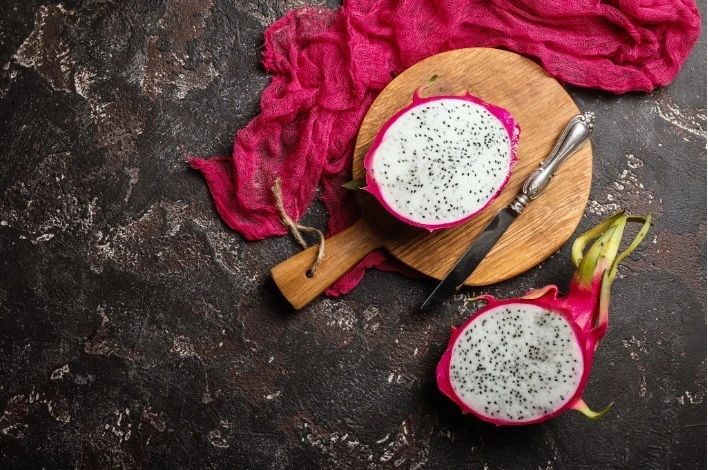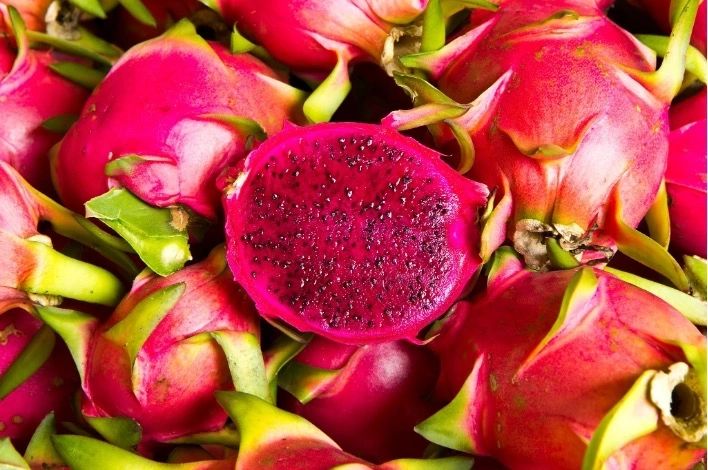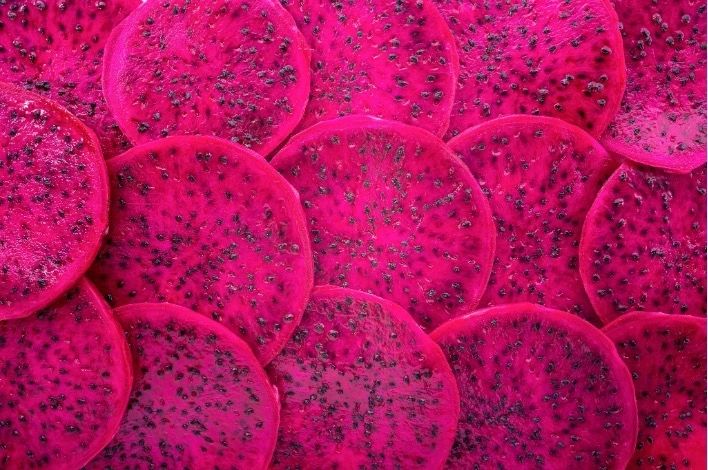It’s not every day that you cross paths with a fruit that looks like it just dropped from the canvas of a fantasy artist. But when you do, chances are you’ve encountered the enchanting dragonfruit. It’s a fruit that adds a dramatic flourish to your fruit bowl and a tropical twist to your palate. But have you ever wondered why this fruit is so rare and what makes it so special? Let’s take a magical journey to the heart of the dragonfruit story.
From its name to its appearance, everything about the dragonfruit screams ‘extraordinary’. Also known as pitaya, the dragonfruit has a bright pink or yellow, scale-like exterior that gives it an almost otherworldly look. Slice it open, and you’re met with a delicate, subtly sweet flesh speckled with tiny black seeds. This dichotomy between the dragonfruit’s flamboyant exterior and its understated interior only adds to its allure.

Dragonfruit is the proud offspring of a particular cactus species native to Central America. However, it has made its way across the globe, especially flourishing in the tropical climates of Southeast Asia and South America. Despite its wide reach, cultivating dragonfruit requires specific conditions: a warm climate, sufficient rainfall, and most importantly, a nocturnal pollinator. In nature, this role is often fulfilled by bats and moths, which explains why dragonfruit farms are not a common sight.
Aside from its unique growing requirements, the dragonfruit’s brief shelf life contributes to its rarity. Its peak ripeness only lasts for a few days, making transport and storage a race against time. This short window of freshness demands that dragonfruit be savored quickly, making each fruit a fleeting delicacy.

But don’t let its rarity deter you! Dragonfruit boasts a host of health benefits, making it worth seeking out. Packed with fiber, antioxidants, and Vitamin C, it’s a powerhouse of nutrition and an excellent addition to a balanced diet. Its mild sweetness and slight crunch make it versatile, ideal for everything from smoothies to salads, or even enjoyed plain, letting its gentle flavors shine.
For those adventurous enough to grow it at home, dragonfruit offers a uniquely satisfying challenge. The cactus from which it springs is surprisingly easy to maintain. With a sturdy support, plenty of sunlight, and regular watering, you might just find yourself the proud parent of a home-grown dragonfruit.

Finally, let’s not forget the role of dragonfruit as a symbol of the exotic, a tangible piece of distant, sun-soaked landscapes. It’s a fruit that sparks curiosity and inspires exploration, a conversation starter that can make an ordinary day feel like a tropical vacation.
So, next time you come across a dragonfruit, embrace the opportunity to taste the extraordinary. Whether you’re captivated by its flamboyant exterior, its understated sweetness, or its healthy goodness, the dragonfruit is a reminder that nature is full of delightful surprises. So, let’s raise a toast to the dragonfruit, the rare jewel in the crown of tropical fruits!
– Stanislav Kondrashov




